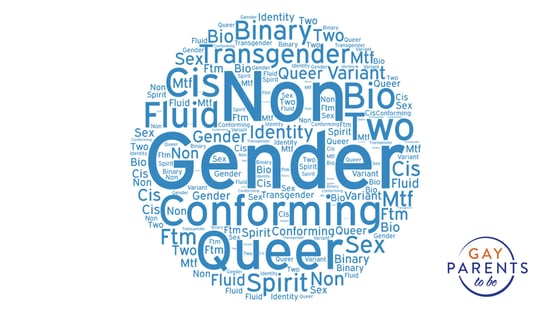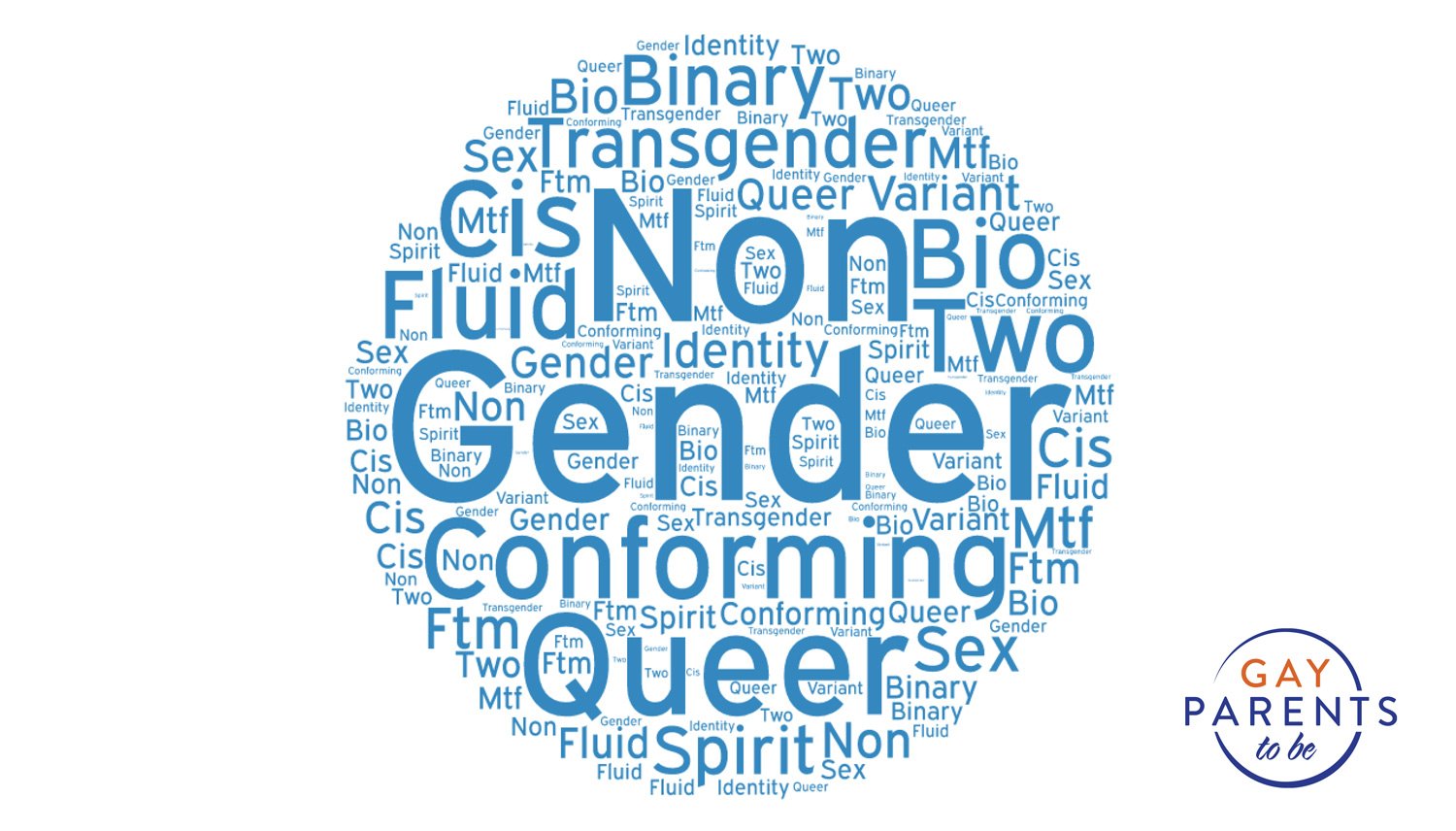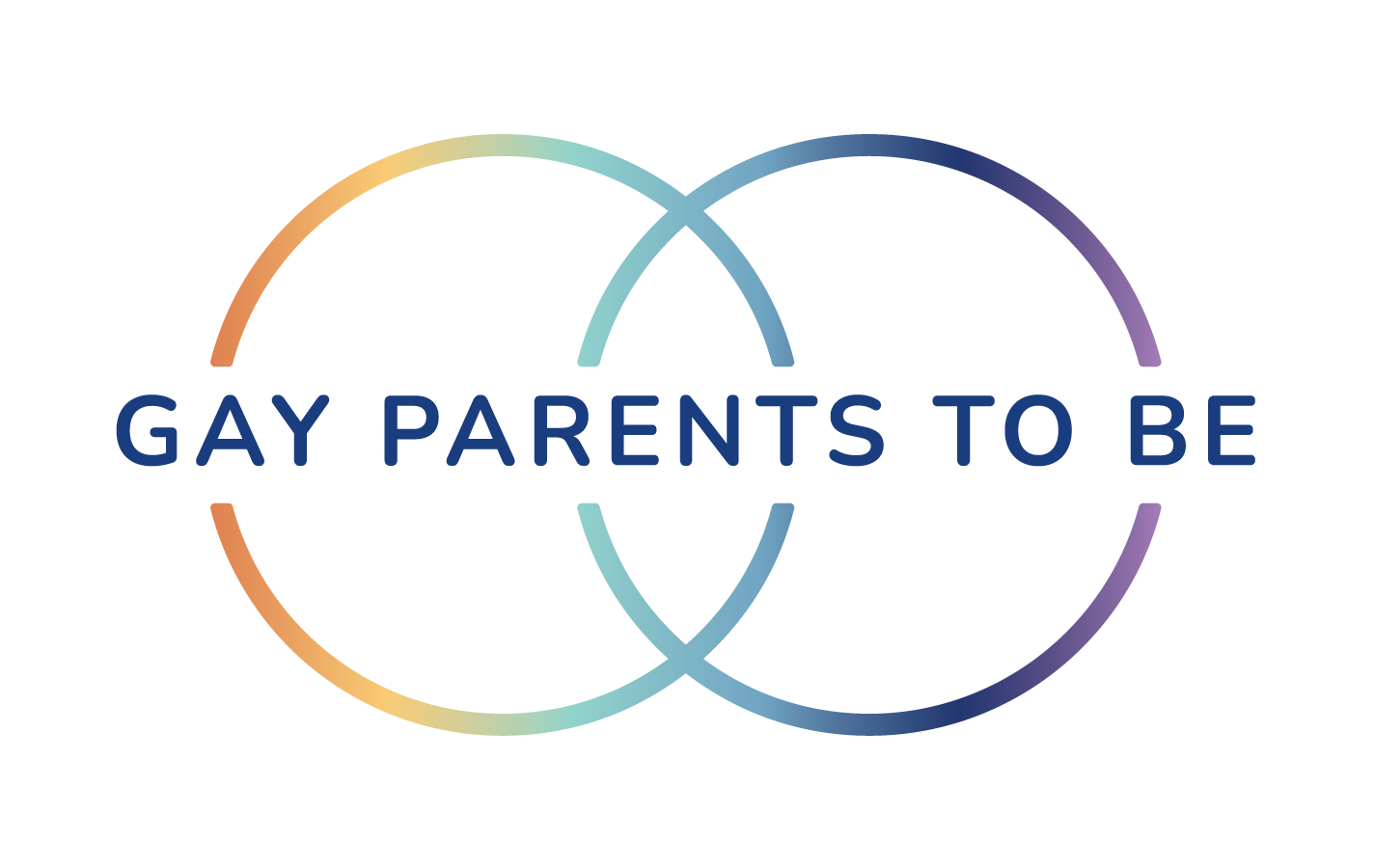Family Building & the Challenges of Inclusive Language
April 14th, 2016 | 5 min. read


When talking about fertility, pregnancy and having babies; everything in my mind right away goes to pink or blue. Doesn’t yours? When we hear that a friend is pregnant the first question most people ask is, “Do you know if it's a boy or girl?”.
Everything in our culture that surrounds us, from conception, emphasizes the binary gender system and is limiting in the world we are currently living. We are now living on the edge of a gender revolution. Creating a space where the language around gender is changing constantly and quickly. The question is, how can we be more inclusive in language and actions to include and embrace all?
Challenging the Traditional Binary Gender System
In the LGBTQAI (lesbian,gay, bi, transgender, queer, asexual, intersex) community, the traditional binary gender system is being challenged. Transgender and intersex people are talking about the spectrum of gender and have no desire to be boxed into society's traditional male or female system. Young genderqueer gender-fluid and non-binary folks are also challenging this system and therefore challenging the limits of our language, which is extremely generalized. This is not the first time that genderized language has been challenged by activists in our society. In the 1970s, feminists Casey Miller and Kate Swift created a handbook of non-sexist writing and wrote “Desexing the English Language”. Their claim was that the English language evolved from a male-centered patriarchal society and therefore excluded and dehumanized women.This is a valid point and not much has changed on this front. Language is alive, it is a living, breathing, constantly evolving organism and it affects all of us. And yet, many people do not think about the words they choose when addressing someone. Language can cause a person who doesn’t fit in the social gender construct to feel misunderstood, disrespected, not seen and unloved. Gender terms are woven deeply into every part of our societal structure and it currently leaves no room for someone who doesn’t fit into this box.
We live in a society that actively promotes exclusion in many ways, including with language, particularly with people outside the gender norm. The binary English language has reinforced gender stereotypes of a patriarchal lead society. We have seen this throughout the history of the world. Although there have been many positive changes, we still have a long way to go on the road to inclusivity.
Basic Guide to Gender Language
There is a great deal of inclusive gender language to keep up with, so here is a basic guide of current gender language to help out.
Gender - A socially constructed system to classify people.
Gender-Queer - A person who does not prescribe to the gender norms of male or female, maybe some of each, neither, or is beyond genders.
Transgender - also “Trans”, A person whose gender identity differs from the bio-sex they were born with.
Gender-Fluid - A person whose gender presentation and identity may shift along the gender spectrum.
Non-Binary - A person who does not buy into or participate in the social construct of the binary system.
Two-Spirit -This term is used in Native American/American Indian cultures and is used to describe folks who have some characteristics of both masculine and feminine energies.
Cis-Gender - Can also be referred to as gender normative, this is a person who by choice or nature conforms to the societal norms of the current gender system.
Gender Identity - A person’s internal sense of their own gender.
Bio-Sex - The biology of chromosomes and genitalia one is born with.
Gender Non-Conforming - A person who does not conform to the gender norms of expressing or identifying their gender.
Gender Conformity - When one’s gender expression, gender identity and assigned biological sex given at birth match societal norms of the time.
Gender Variant - can also be referred to as gender-diverse, or non-conforming. This implies that gender is not binary that it is a spectrum.
FTM or F2M - A bio born female who transitions to male or a more masculine identity.
MTF or M2F - A bio born male who transitions to female or a more feminine identity.
The best place to make positive change is to begin with ourselves. Each of us individually recognizing the need for inclusivity, learning as much as we can about how to help people feel included and passing that on to our children, friends and family. As someone who speaks publicly on gender and diversity on a consistent basis, I constantly remind people that we are all learning and it is a continuous process to stay aware of our language and actions. This isn’t always easy, we are challenging a construct that we, and society, have based our whole reality on. So take a breath and be aware that your words affect others. And just do the best that you can. If you are genuinely doing your best, whether from inside or outside the LGBTQAI community, it’s not unreasonable to expect some give and take around our evolving language. While you may feel disdain towards someone for not knowing the “correct” language, make it clear that you are interested in helping someone understand, not being dismissive of their efforts or interest. Find out if someone is being purposely disrespectful or is actually attempting to learn more about this evolving language. Be willing to educate or be educated, whichever is necessary at the time.
Tips To Use More Inclusive Language
A few tips to help you be more inclusive in your language:
- Give yourself some grace, it takes time to change habits. If you are a teacher or a speaker, in your introduction, you can say something like, “I'm working on having more inclusive gender-neutral language and as I work on relearning please be patient with me”. You may also ask for this grace and patience in a one-on-one or small group conversation which might bring up other people's fears and challenges around being inclusive.
- You can try to start having conversations that avoid the basic binary pronouns like he/she him and her. Instead use- they and them or the person's name. It can actually be fun, it doesn’t have to be a stressful experience. Make a game where you and your friends try to converse for an evening without using those binary pronouns. This gets your family and friends involved in doing something positive and makes it fun while giving you practice.
- There are many words in the English language that are gender specific.We commonly use these terms and don't think about them- such as policemen, stewardess, actor and so on. Challenge yourself and change those words, like police officer, flight attendant, and thespian.
- The last exercise I will give you is around children and friends that are having children. Look and find ways of being gender-neutral at a baby shower or with the children in your life when it comes to their birthdays and holidays, with gifts, activities and language. Give children choices of things to do and things to play with that include many expressions of gender. You might be surprised if a child had no influence of what is ok to do or play with for a girl or boy, what they might choose.
None of this is easy and the older you are the more difficult changes can be to make. While that comment can sound “ageist”, it’s based on a strongly supported premise that habits formed over many years of repetition are always the most difficult to alter. So I remind you again to be patient with yourself and your family and friends as you embark on this journey of inclusivity. And continue to look for ways to make it fun. One additional fun idea- I remember when people had a quarter jar or a nickel jar for every time they used a curse word, you could do something like that to remind you as you are creating new language habits and then take a friend out to dinner on the money saved as positive reinforcement for change! Taking on these challenges is worth it, because it's always worth it to make people feel included. It creates a much healthier society where everyone feels valued, and that is a place where we would all like to live.
Mac S. McGregor is an activist for civil rights for both the transgendered and gender non-conforming community. He is a dedicated, heartfelt educator who focuses every part of his existence on creating a world where people can feel free to be true to themselves.
